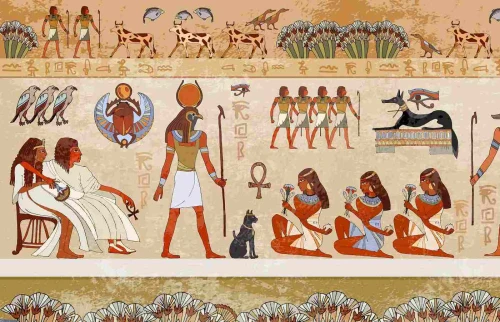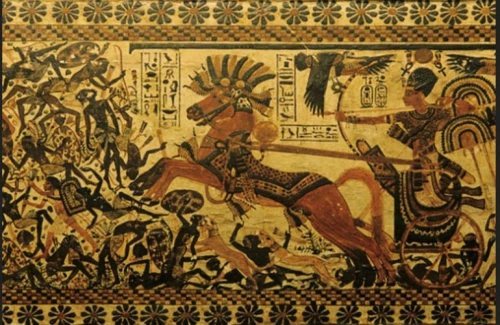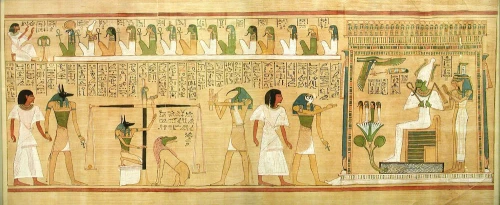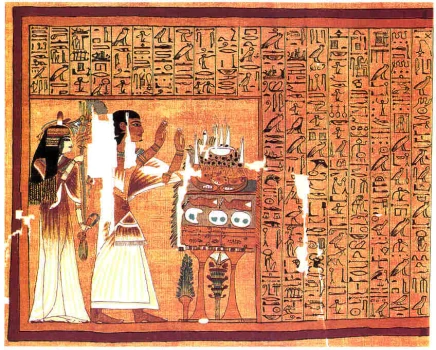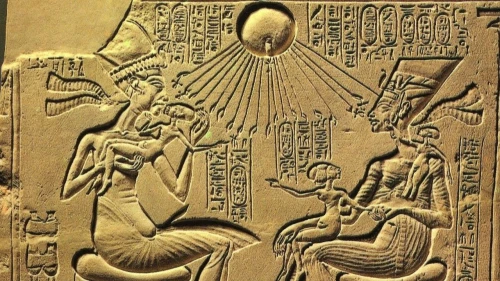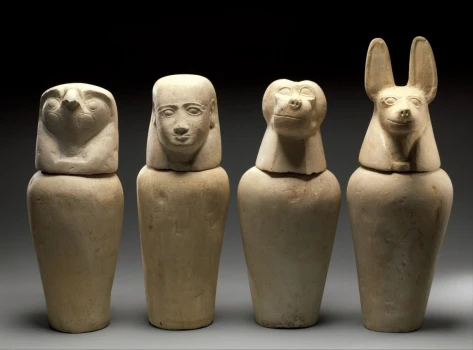
FOUR SONS OF HORUS The falcon-headed god Horus was said to have four sons: Duamutef, with the head of a jackal; Qebsenef, with the head of a falcon; Hapi, with the head of a baboon; and Mesti, with a human head. Each of the four sons was responsible for protecting one of the mummy's internal organs (stomach, liver, intestines, and kidneys).
The organs were placed in limestone jars, with each lid shaped like the head of one of the sons. These were canopic jars from the Greek legend of Canopus, the pilot of Menelaus, king of Sparta, who was buried in Egypt. He was said to have been worshipped in the form of a jar with feet. Once wrapped, the internal organs were placed in the canopic jars. A fluid (probably dissolved natron) called the liquid of the children of Horus was poured over the organs.
The jars were then sealed and placed in a small, decorated chest with four compartments, one for each jar. At this point, a magical spell was recited to invoke the protection of the four sons of Horus:
Messi says: I am Mesti, thy son Osiris. I come so that I may protect thee. I cause thy house to Four sons of Horus were supposed to protect the internal organs of the deceased. These amulets were sewn on the mummy as additional protection. prosper, to be firm, by the command of Ptah, by the command of Re himself. Hapi says: I am Hapi, thy son Osiris. I come so that I may protect thee. I bandage for thee thy head and thy limbs, killing for thee thy enemies under thee. I give to thee thy head, forever. Duamutef says: I am thy son Horus, loving thee. I come to avenge my father, Osiris. I do not permit his destruction to thee. I place it under thy feet forever and ever. Qebsenef says: I am thy son Osiris. I have come that I may protect thee. I gather together thy bones, I collect thy limbs, I bring for thee they heart. I place it upon its seat in thy body. I cause thy house to prosper.
The Pyramid Texts call the Four Sons of Horus friends of the king who assist him as he rises to the heavens, but in the New Kingdom, they become guardians of the mummy's internal organs.
 English
English
 Spain
Spain

